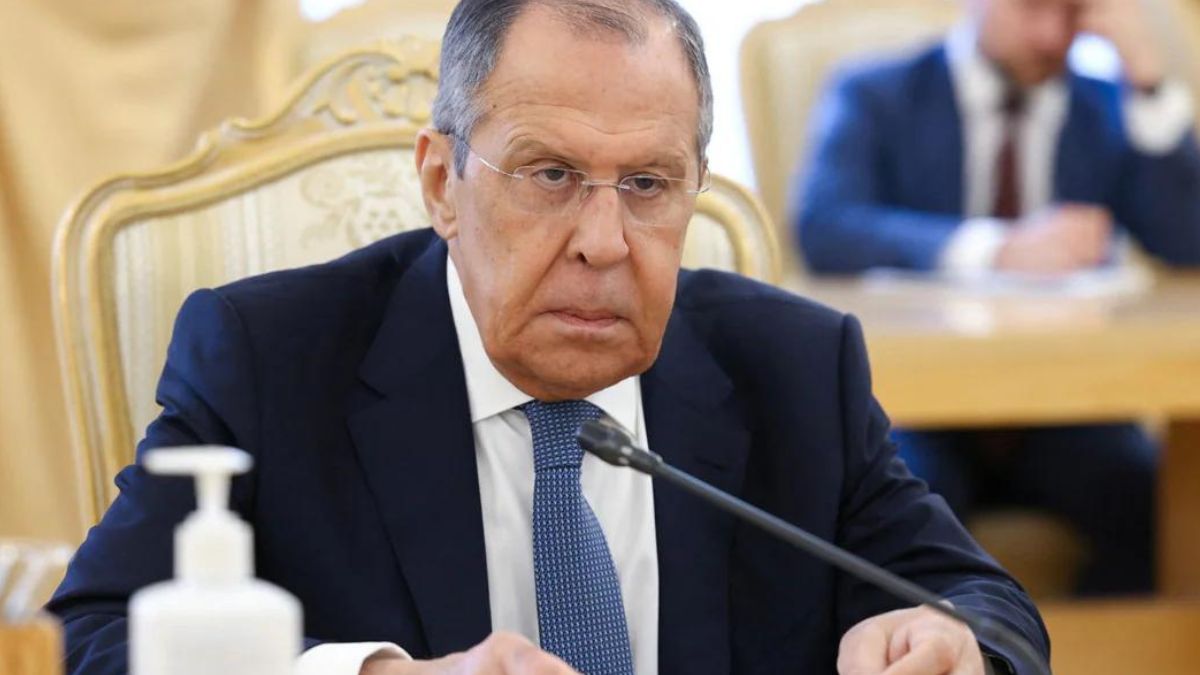Russia’s Foreign Minister Sergei Lavrov on Monday accused Western nations of seeking a ceasefire in Ukraine to enable the resupply of advanced weapons to Kyiv.
The talk of negotiations for a ceasefire or peace deal in the three-year conflict has gained attention following Donald Trump’s victory in last month’s US presidential election.
“The West is starting to talk about a ceasefire as a means to give Ukraine a respite, and give themselves the opportunity to once again pump Ukraine up with modern long-range weapons. This, of course, is not a path to peace,” AFP quoted Lavrov as saying during a meeting in Moscow with his Hungarian counterpart Peter Szijjarto.
Lavrov made these remarks as German Chancellor Olaf Scholz made a surprise visit to Kyiv, where he held talks with Ukrainian President Volodymyr Zelenskyy.
Last month, Scholz became the first major Western leader who held direct talks with Russian President Vladimir Putin in a controversial phone call, urging the Kremlin to consider negotiating a deal with Kyiv.
Reacting to Scholz’s Ukraine visit earlier in the day, Kremlin spokesperson Dmitry Peskov said Moscow had no “expectations” from German Chancellor’s Ukraine visit.
“I would not say we have expectations from this visit. Germany is continuing its line of unconditional support to Ukraine,” Peskov said, adding that Putin had not passed on a message to Volodymyr Zelenskyy through Scholz.
Ukrainian and Russian forces have heavily relied on artillery and guided missiles to prevent advances and target supply depots and command centers.
Ukraine has used US-made ATACMS missiles, with a range of 190 miles (300 km), to strike Russian forces, but initially, these were restricted to avoid drawing Nato into the conflict.
Impact Shorts
More ShortsRecently, President Joe Biden lifted the ban, allowing their use in defending Ukrainian-held areas in Russia’s Kursk region.
The UK and France have provided Storm Shadow and Scalp missiles with a range of 155 miles (250 km), though Ukraine has been barred from using them against Russian territory.
Ukraine’s allies have also sent over 80 multiple-launch rocket systems, such as HIMARS and M270, along with more than 500 field guns, including the M777 howitzer.
Despite these supplies, Russia maintains an artillery advantage, with a far greater stockpile of shells, according to a BBC report, citing the Royal United Services Institute.
Ukraine’s air force has received F-16 fighter jets from Nato members like Belgium, Denmark, and the Netherlands, with training ongoing for Ukrainian pilots.
To defend against Russian drones and missiles, Western countries have supplied various air defense systems, including the UK’s Starstreak, the US’s Patriot missile system, and Germany’s Iris-T, along with the Nasams system from the US and Norway. However, the cost of operating systems like the Patriots, at $3 million per missile, remains a challenge.
With inputs from agencies


)

)
)
)
)
)
)
)
)



